Trampolines can be a fun addition to any backyard, providing hours of entertainment for kids and adults. However, before jumping, you’ll need to assemble the trampoline. Many people are intimidated by the thought of putting together a trampoline, but the truth is that it’s not as hard as it may seem.
While it requires time and effort, anyone can assemble a trampoline with the right tools and instructions. In this article, we’ll provide you with a step-by-step guide for assembling a trampoline and tips for common challenges and how to maintain your trampoline.
Whether you’re a seasoned DIYer or a beginner, this guide will help you put together your trampoline quickly and safely, so you can start enjoying all the fun that comes with it. So, let’s get started!
How hard is it to put together a trampoline:
Assembling a trampoline may seem daunting, but it’s not as hard. With the right tools and instructions, anyone can assemble a trampoline safely and easily.
How hard is it to put together a trampoline?
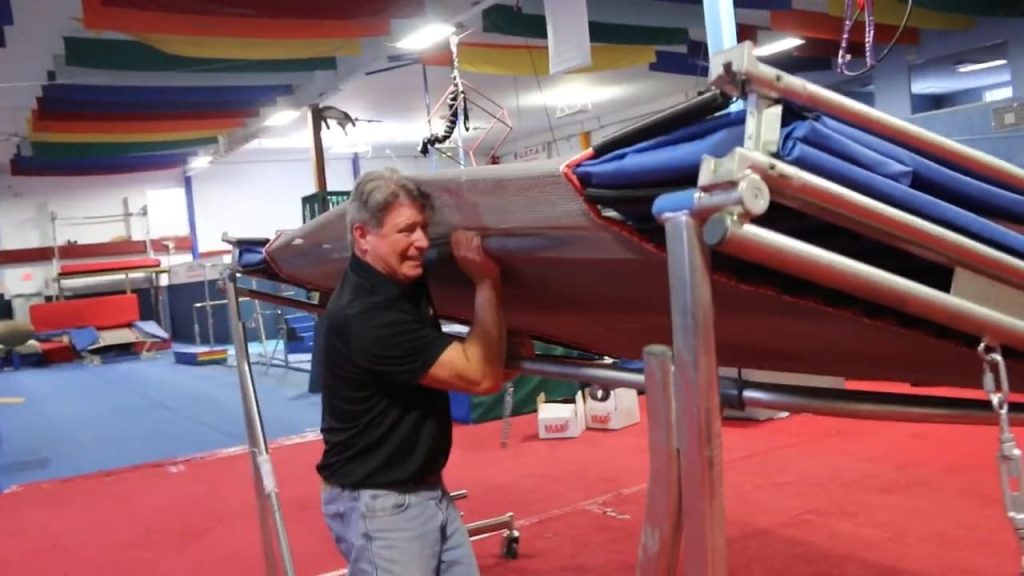
Assembling a trampoline requires time and effort, but it’s not difficult if you have the right tools and instructions. It typically involves attaching the frame and legs, assembling the springs and mat, and installing the safety enclosure.
With patience and attention to detail, anyone can successfully assemble a trampoline. However, it’s important to follow safety guidelines and weight limits to ensure that the trampoline is used safely.
Factors to Consider Before Purchasing a Trampoline
Trampolines can be a great addition to your backyard or indoor recreational area, providing hours of fun and exercise for people of all ages. However, before you rush out to buy a trampoline, it’s important to consider several factors to ensure that you get the best trampoline for your needs and that you and your family stay safe while using it.
We’ll discuss some key factors before purchasing a trampoline, including the different types of trampolines and their features, the importance of selecting a suitable trampoline for your needs, and the safety considerations that should be considered before making a purchase.
Types of Trampolines and Their Features
Several trampolines are available in the market, including round, rectangular, and square trampolines. Each type of trampoline has its own set of features and benefits, and the choice of which to purchase depends on your needs and preferences.
Round trampolines are the most common type of trampoline and are often the most affordable. They are also the safest, as the design helps to keep jumpers centered in the middle of the mat. Round trampolines are best suited for recreational use by families and children.
Rectangular trampolines, on the other hand, are better suited for advanced jumpers and gymnasts. They provide a higher bounce and a larger surface area for performing complex tricks and stunts. Rectangular trampolines tend to be more expensive than round trampolines and are best suited for those with experience in trampolining.
Square trampolines are a relatively new type of trampoline and combine the benefits of round and rectangular trampolines. They provide a larger jumping area than a round trampoline but are more affordable than rectangular trampolines. Square trampolines are best suited for families with older children who want a larger jumping area.
Selecting a Suitable Trampoline for Your Needs

Once you’ve decided on the type of trampoline you want, you must consider several factors to select a suitable one for your needs. These factors include:
Weight Limit: Ensure that the trampoline can support the weight of all intended users. Most trampolines have a weight limit of 250-300 pounds, but some models can support higher weights.
Size: Consider the size of your backyard or indoor area and choose a trampoline that fits comfortably within that space. Remember to leave enough room around the trampoline for safety purposes.
Safety Features: Look for trampolines with safety features such as enclosures, padded frames, and non-slip mats.
Durability: Choose a trampoline made from high-quality materials that last many years.
Safety Considerations
Finally, before purchasing, it’s important to consider the safety considerations associated with trampolines. Trampolines can be dangerous if used improperly, and it’s important to take the necessary safety precautions to ensure that you and your family stay safe while using the trampoline. Some safety considerations include:
- Always supervise children while they are using the trampoline.
- Ensure the trampoline is set up on a level surface and away from obstacles such as trees or buildings.
- Always use safety enclosures and padding to prevent injuries from falls.
- Do not allow more than one person to jump on the trampoline simultaneously.
- Follow all manufacturer’s instructions for assembly and maintenance.
Tools and Materials Required to Assemble a Trampoline
Assembling a trampoline can be a fun and rewarding project. Still, it’s important to have the right tools and materials to ensure that the process goes smoothly and that the trampoline is assembled safely and correctly.
We’ll provide a list of necessary tools and materials for assembling a trampoline and explain the importance of having the right tools and materials.
Tools Required for Trampoline Assembly
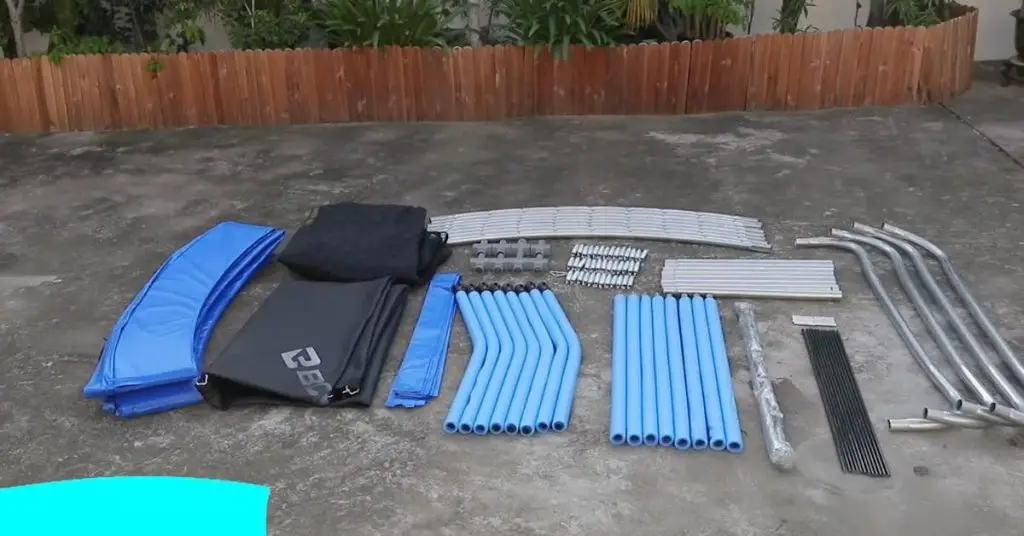
The tools required for assembling a trampoline may vary depending on the model and manufacturer, but some common tools include:
- Phillips head screwdriver
- Adjustable wrench
- Rubber mallet
- Scissors or wire cutters
- Spring pulling tool (if not provided with the trampoline)
Some trampoline manufacturers may also include specialized tools that are necessary for assembly. Be sure to check the assembly instructions and ensure you have all the necessary tools before beginning the assembly process.
Materials Required for Trampoline Assembly
In addition to tools, there are several materials that you will need to assemble a trampoline. These materials may include:
- Trampoline frame and legs
- Trampoline mat
- Springs
- Safety net and poles (if applicable)
- Foam padding for the frame and poles
- Anchor kit (if necessary)
Again, the specific materials required may vary depending on the trampoline model and manufacturer. Be sure to check the assembly instructions and ensure you have all the necessary materials before beginning the assembly process.
Importance of Having the Right Tools and Materials
Having the right tools and materials is crucial for assembling a trampoline safely and correctly. Using the wrong tools or materials can lead to errors in assembly or even cause injuries to you or your family members.
For example, using a flathead screwdriver instead of a Phillips head screwdriver can damage the screws and make it difficult to assemble the trampoline. Using the wrong size wrench can also cause damage to the bolts and nuts.
Using tools that are too small or too large for the job can also cause slippage or stripping of bolts and screws, leading to safety hazards.
Using the wrong materials can also be a safety hazard. For example, bungee cords instead of springs can cause the trampoline to bounce unevenly or even collapse. Using materials that are not designed for outdoor use can lead to rusting or deterioration over time, which can cause safety hazards.
Step-by-Step Guide to Assembling a Trampoline
Assembling a trampoline can be fun, but it’s important to do it correctly to ensure it is safe and stable. In this step-by-step guide, we’ll walk you through assembling a trampoline, including tips for ensuring that the trampoline is assembled safely and securely.
Step 1: Unpack the Trampoline and Check for Damage
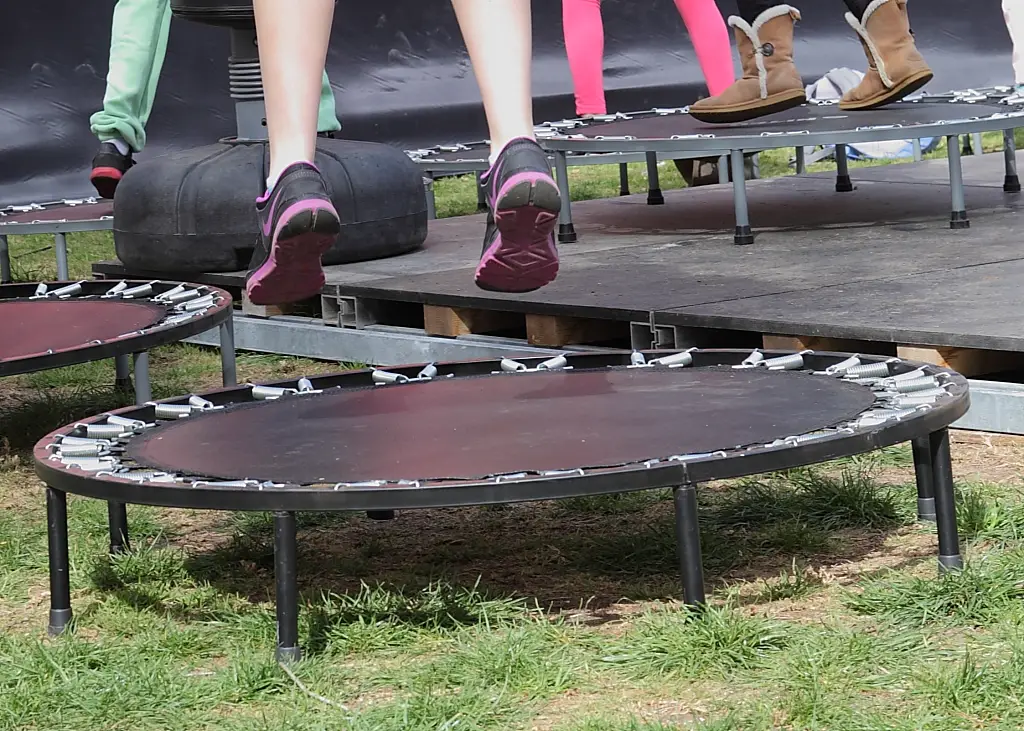
Before assembling the trampoline, unpack all the parts and check for any damage. Read the manufacturer’s instructions carefully to ensure you have all the necessary parts and tools. Check that all the springs are present and in good condition, and make sure that the frame and legs are not damaged.
Step 2: Lay Out the Trampoline Frame and Attach the Legs
Lay out the trampoline frame on a flat surface, such as a lawn or driveway. Attach the legs to the frame, following the manufacturer’s instructions. Use the provided screws and bolts to secure the legs to the frame. Be sure to tighten the screws and bolts securely to ensure the legs are stable.
Step 3: Attach the Trampoline Springs
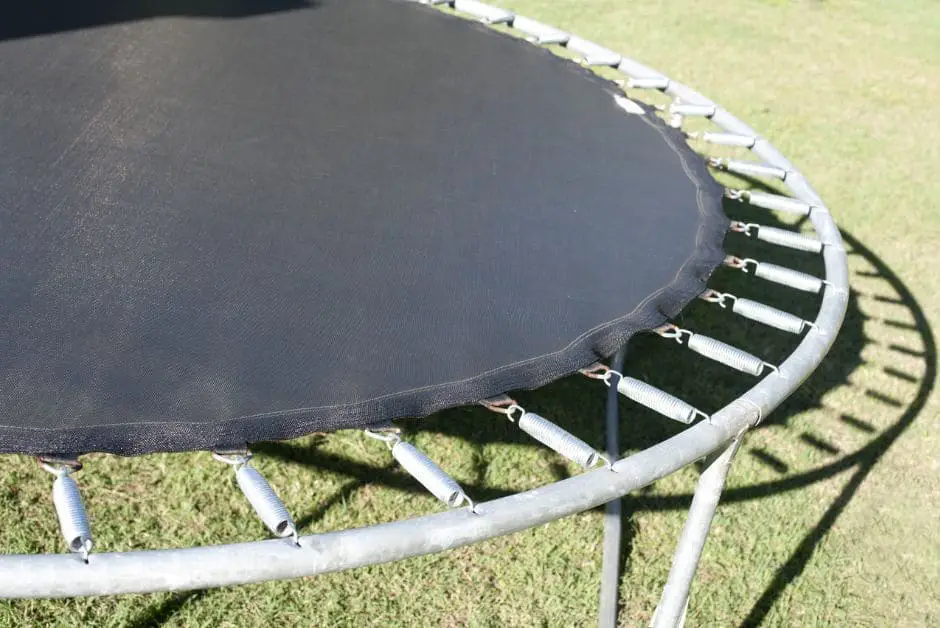
Attach the trampoline springs to the frame, following the manufacturer’s instructions. Start at one end of the frame and work your way around, attaching the springs evenly spaced. Use a spring-pulling tool, if necessary, to help you attach the springs.
Be sure to use the correct number of springs specified by the manufacturer to ensure that the trampoline is balanced and bounces evenly.
Step 4: Attach the Trampoline Mat
Attach the trampoline mat to the frame, following the manufacturer’s instructions. Ensure the mat is centered on the frame and all the springs are securely attached. The mat should be taut and evenly distributed across the frame.
Step 5: Attach the Trampoline Safety Net (if applicable)
If your trampoline has a safety net, attach it to the frame and poles, following the manufacturer’s instructions. Ensure that the net is securely attached and that there are no gaps between the net and the trampoline mat.
Step 6: Attach the Trampoline Padding (if applicable)
If your trampoline has foam padding for the frame and poles, attach it to the frame and poles, following the manufacturer’s instructions. The padding should cover all the exposed metal parts to prevent injuries.
Step 7: Secure the Trampoline (if applicable)
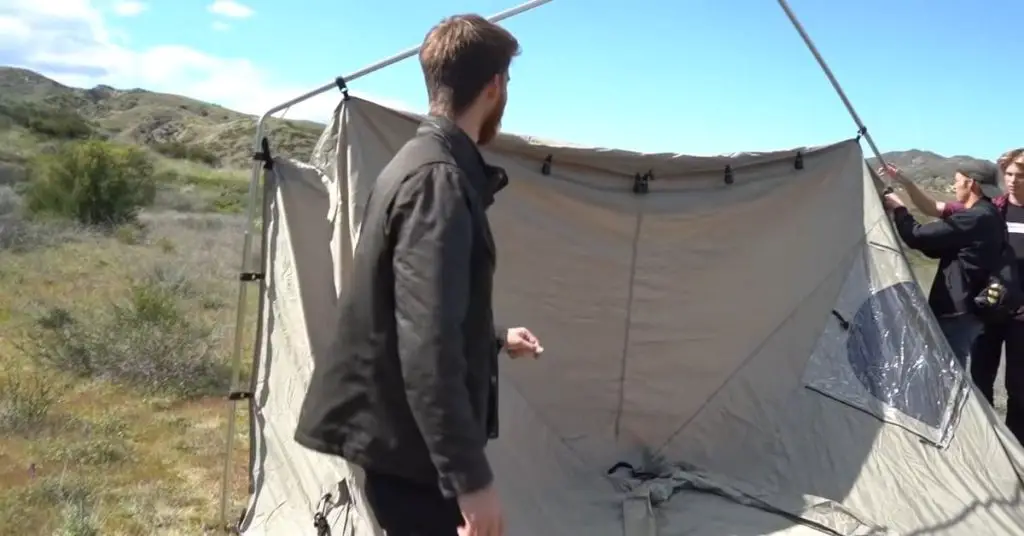
If your trampoline is designed to be anchored to the ground, use an anchor kit to secure it in place. Follow the manufacturer’s instructions to ensure that the trampoline is securely anchored.
Safety Considerations
Assembling a trampoline can be a fun project, but it’s important to consider safety considerations to ensure it is safe and stable. Here are some tips for ensuring that the trampoline is assembled safely:
- Follow the manufacturer’s instructions carefully and ensure you have all the necessary tools and parts.
- When assembling the trampoline, wear appropriate safety gear, such as gloves and eye protection.
- Ensure that the trampoline is assembled on a flat, level surface.
- Make sure that the trampoline is stable and balanced before using it. Test the trampoline by bouncing on it gently and checking for any wobbling or instability.
- Always supervise children when using the trampoline, and never allow more than one person to jump on the trampoline at a time.
- Check the trampoline regularly for any signs of damage or wear and tear, and make necessary repairs or replacements.
Common Challenges and Solutions
Assembling a trampoline can be a fun and rewarding experience but can also be frustrating if you encounter challenges. Here are some common challenges people may encounter while assembling a trampoline, along with solutions and workarounds.
Challenge 1: Missing Parts
One of the most common challenges people encounter while assembling a trampoline is missing parts. This can be frustrating, especially if you’re in the middle of assembling the trampoline and you realize that you’re missing a key component.
Solution: Contact the Manufacturer
If you discover that you’re missing parts, the first step is to contact the manufacturer. Most manufacturers will have a customer service hotline or email address you can use to contact them. They may be able to send you the missing parts or offer suggestions for workarounds.
Workaround: Use Substitute Parts
You may need to find substitute parts if the manufacturer cannot promptly send you the missing parts. For example, you may be able to find replacement screws or bolts at a hardware store. Just be sure to choose parts the same size and shape as the original parts to ensure that the trampoline is assembled correctly.
Challenge 2: Difficult to Attach Springs
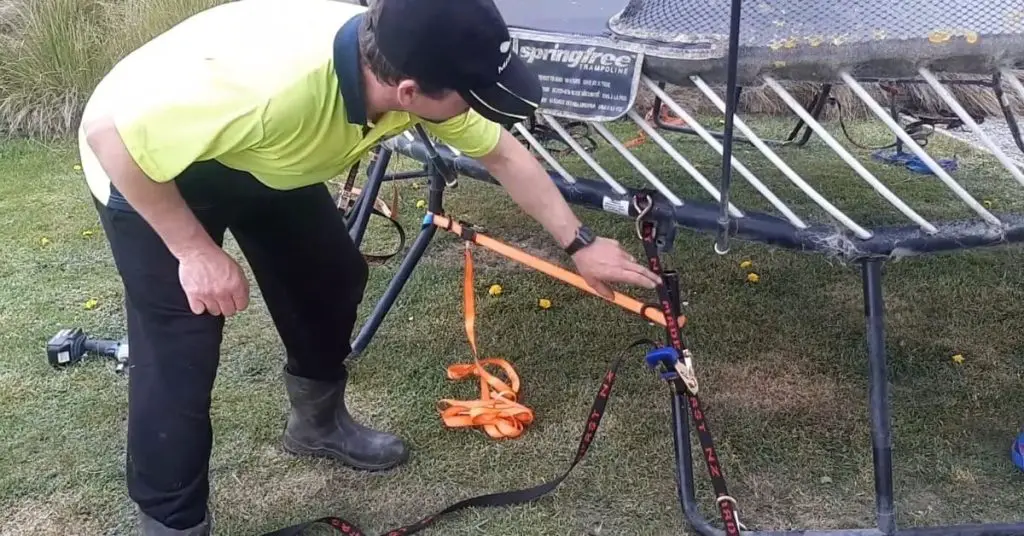
Attaching the springs to the trampoline frame, especially working alone, can be challenging. The springs can be stiff and difficult to stretch into place, which can be frustrating.
Solution: Use a Spring Pulling Tool
One solution is to use a spring-pulling tool. This tool makes it easier to stretch the springs into place and can save you time and frustration. You can purchase a spring-pulling tool online or at a sporting goods store.
Workaround: Use a Hook
If you don’t have a spring-pulling tool, you can use a hook to attach the springs. A long, thin hook can stretch the springs into place. Just be careful not to scratch the frame or mat while you’re working.
Challenge 3: Uneven Bounce
If the trampoline is not assembled correctly, it may bounce unevenly. This can be frustrating, especially if you’ve spent much time and effort assembling the trampoline.
Solution: Check the Spring Tension
One solution is to check the tension on the springs. Make sure that all the springs are evenly spaced and that they are all under the same tension. Adjust the tension on the springs as needed to ensure that the trampoline bounces evenly.
Workaround: Adjust the Placement of the Springs
If adjusting the spring tension doesn’t solve the problem, you may need to adjust the placement of the springs. Move the springs around to see if this improves the bounce. You may also want to check the trampoline legs to ensure that they are all level and stable.
Challenge 4: Difficulty Level
Assembling a trampoline can be challenging, especially if you’ve never done it before. Some people may find the process overwhelming or frustrating.
Solution: Follow the Instructions Carefully
The best solution is to follow the instructions carefully. Read through the instructions before you begin, and make sure that you have all the necessary tools and parts. Take your time and don’t rush through the process. If you get stuck, don’t hesitate to contact the manufacturer for help.
Workaround: Seek Help from a Professional
If you’re struggling with the assembly process, you may want to seek help from a professional. Many sporting goods stores or trampoline dealers offer assembly services for a fee. This can save you a lot of time and frustration.
Maintenance and Care
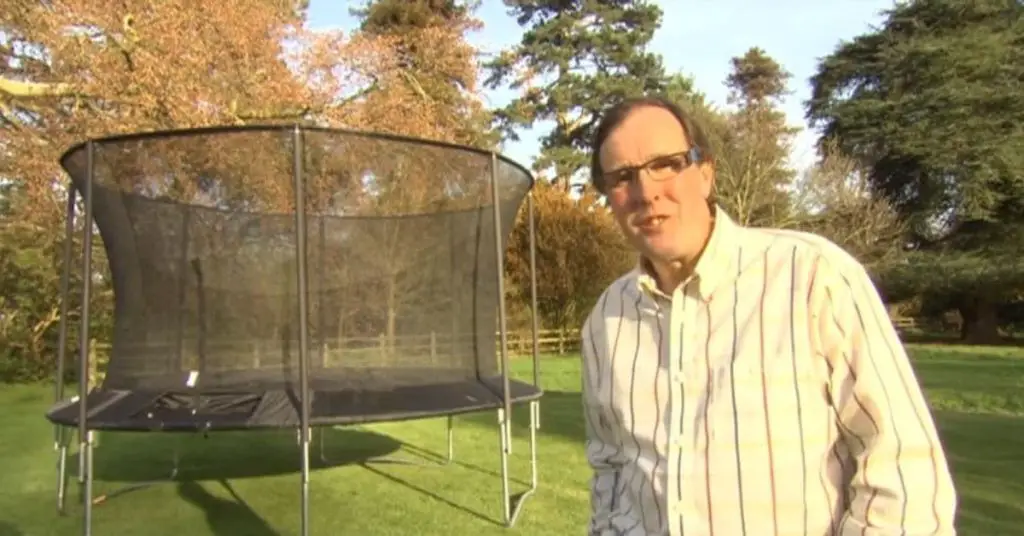
Trampolines can provide hours of fun for people of all ages, but it’s important to take care of your trampoline to ensure its longevity and safety. Proper maintenance and care can help to prevent damage to the trampoline and injuries to those who use it. Here are some tips for maintaining and caring for your trampoline.
Keep it Clean
Regular cleaning is essential for keeping your trampoline in good condition. Dirt leaves and other debris can accumulate on the mat and springs, affecting the trampoline’s bounce and safety.
To clean your trampoline, sweep the mat with a soft-bristled broom and wipe down the frame and springs with a damp cloth. Avoid harsh chemicals or abrasive materials, as these can damage the trampoline.
Check for Damage
Before each use, inspect the trampoline for any signs of damage, such as tears in the mat, bent or broken springs, or rust on the frame. If you notice any damage, do not use the trampoline until it has been repaired or replaced. It’s also a good idea to check the trampoline periodically throughout the year, especially after periods of heavy use.
Protect it from the Elements.
Exposure to the elements can damage your trampoline over time. Consider investing in a trampoline cover or storing it indoors during inclement weather to protect it. If you choose to leave your trampoline outside, ensure it is securely anchored to the ground to prevent it from blowing away in high winds.
Follow Weight Limits and Safety Guidelines
Trampolines have weight limits for a reason. Exceeding the weight limit can cause the trampoline to become unstable and increase the risk of injury. Ensure that everyone using the trampoline follows the weight limit and other safety guidelines, such as not jumping off the trampoline or performing dangerous stunts.
Use a Safety Enclosure
A safety enclosure can help to prevent falls and injuries while using the trampoline. Ensure the enclosure is properly installed and in good condition before use. It’s also important to ensure the enclosure is tall enough to prevent users from jumping over it.
FAQs
Q.1 Do I need any special tools to assemble a trampoline?
Yes, you will need some basic tools, such as a screwdriver, pliers, and possibly a rubber mallet. Check the instructions with your trampoline for a complete list of necessary tools.
Q.2 How long does it take to assemble a trampoline?
The time it takes to assemble a trampoline can vary depending on the size and complexity of the trampoline and your level of experience. It can take anywhere from 1-4 hours to complete.
Q.3 Can I assemble a trampoline alone or do I need help?
You should have at least one other person to help with the assembly process, as some steps may require more than one person. However, some trampolines are designed to be assembled by a single person, so check the instructions before beginning.
Q.4 I should know any safety considerations when assembling a trampoline.
Yes, it’s important to follow all safety guidelines outlined in the instructions to ensure that the trampoline is assembled correctly and safely. This includes making sure that all parts are securely fastened and that the trampoline is level and on a flat surface.
Q.5 What should I do if I encounter a problem during assembly?
If you encounter any problems during the assembly process, refer to the instructions for troubleshooting tips. If you’re still unable to resolve the issue, contact the manufacturer for assistance.
Conclusion
In conclusion, assembling a trampoline may seem like a daunting task, but with the right tools, materials, and instructions, it can be a relatively easy process. It’s important to consider factors such as the type of trampoline, its features, and safety considerations before purchasing.
Additionally, having the proper tools and materials is crucial to making the assembly process smooth and efficient. A step-by-step guide can also help ensure the trampoline is assembled correctly and safely.
Despite potential challenges, such as missing parts or difficult-to-attach springs, solutions and workarounds exist to overcome these obstacles. Finally, proper maintenance and care can extend the longevity and safety of the trampoline, such as cleaning it regularly, checking for damage, and protecting it from the elements.
Overall, with the right preparation, assembly, and maintenance, enjoying a trampoline can be a fun and safe activity for the whole family.
We hope this guide helps you understand how to assemble a trampoline, which can be a difficult task. If you have any questions, please feel free to ask them in the comments section below!
